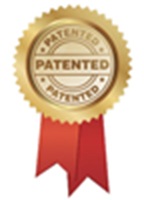Attention-Deficit Hyperactivity Disorder (ADHD) in Children
Introduction:
Attention-deficit hyperactivity disorder (ADHD) is one of the most common neurological disorders among children and adolescents. This disorder is characterized by a cluster of persistent symptoms that affect behavior, attention, and impulse control. Symptoms often begin in early childhood and significantly impact a child's academic, social, and emotional functioning.
Types
1-Predominantly inattentive type: This type is characterized by difficulty paying attention to details, frequent forgetfulness,
2-Predominantly hyperactive-impulsive type: This type is characterized by excessive activity, such as running and jumping at inappropriate times, and difficulty sitting or standing.
3-Combined type: This is the most common type, in which the child exhibits symptoms of both types.
Causes and Influencing Factors:
Genetic factors: Studies have shown that ADHD runs in families, suggesting a strong genetic component.
Neurophysiological factors: MRI studies show that certain brain regions responsible for attention, planning, and impulse control (such as the prefrontal cortex) are smaller or less active in these individuals.
Environmental factors: Certain environmental factors may contribute to an increased risk of developing the disorder. These include exposure to nicotine or alcohol during pregnancy, premature birth, or exposure to environmental toxins such as lead.
diagnosis
Attention-deficit hyperactivity disorder (ADHD) is diagnosed by a qualified professional (psychiatrist, pediatrician, or neurologist) based on specific criteria. Diagnosis requires the presence of a certain number of persistent symptoms (for more than 6 months) in at least two different settings (such as home and school), and that these symptoms significantly impact the child's daily functioning. Diagnosis also relies on a comprehensive assessment that includes interviews with the child, parents, and teachers. Use behavioral rating scales and rule out other possible causes of symptoms.
Treatment
There is no complete cure for ADHD, but available treatments aim to manage symptoms and improve functioning.
Behavioral Therapy: Cognitive behavioral therapy and social skills training are effective non-drug treatments. Behavioral therapy aims to teach children and parents strategies for coping with symptoms:
Establish clear routines.
Use organizational techniques (such as to-do lists).
Reinforce positive behaviors through a reward system.
Learn problem-solving and impulse control skills.
Drug treatment : Commonly used and effective in treating attention deficit hyperactivity disorder (ADHD), these medications increase dopamine and norepinephrine levels in the brain, helping improve attention and concentration and reduce impulsivity. Non-stimulant medications are also a treatment option. Drug treatment must be carefully supervised to determine the appropriate dosage and monitor side effects.
Best regards




